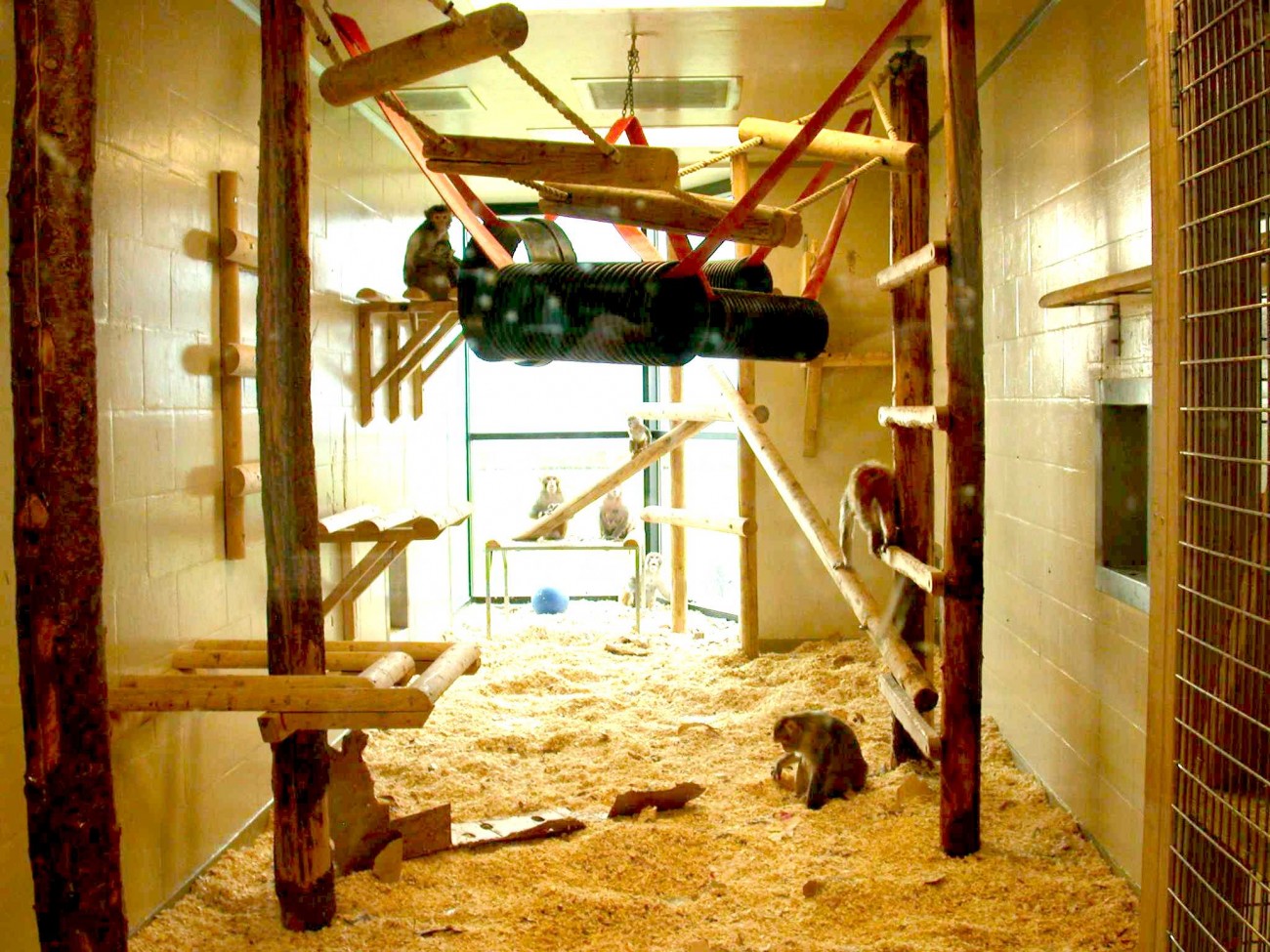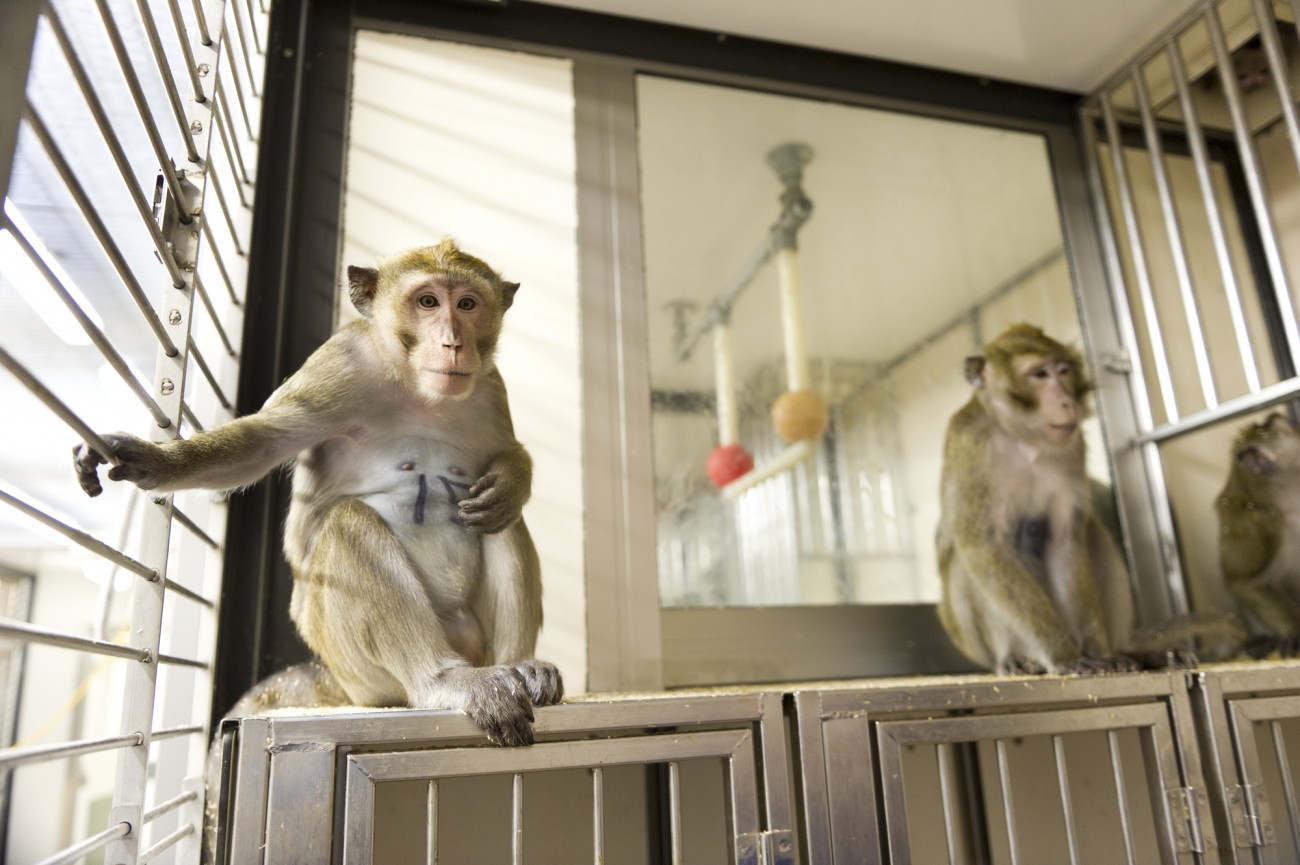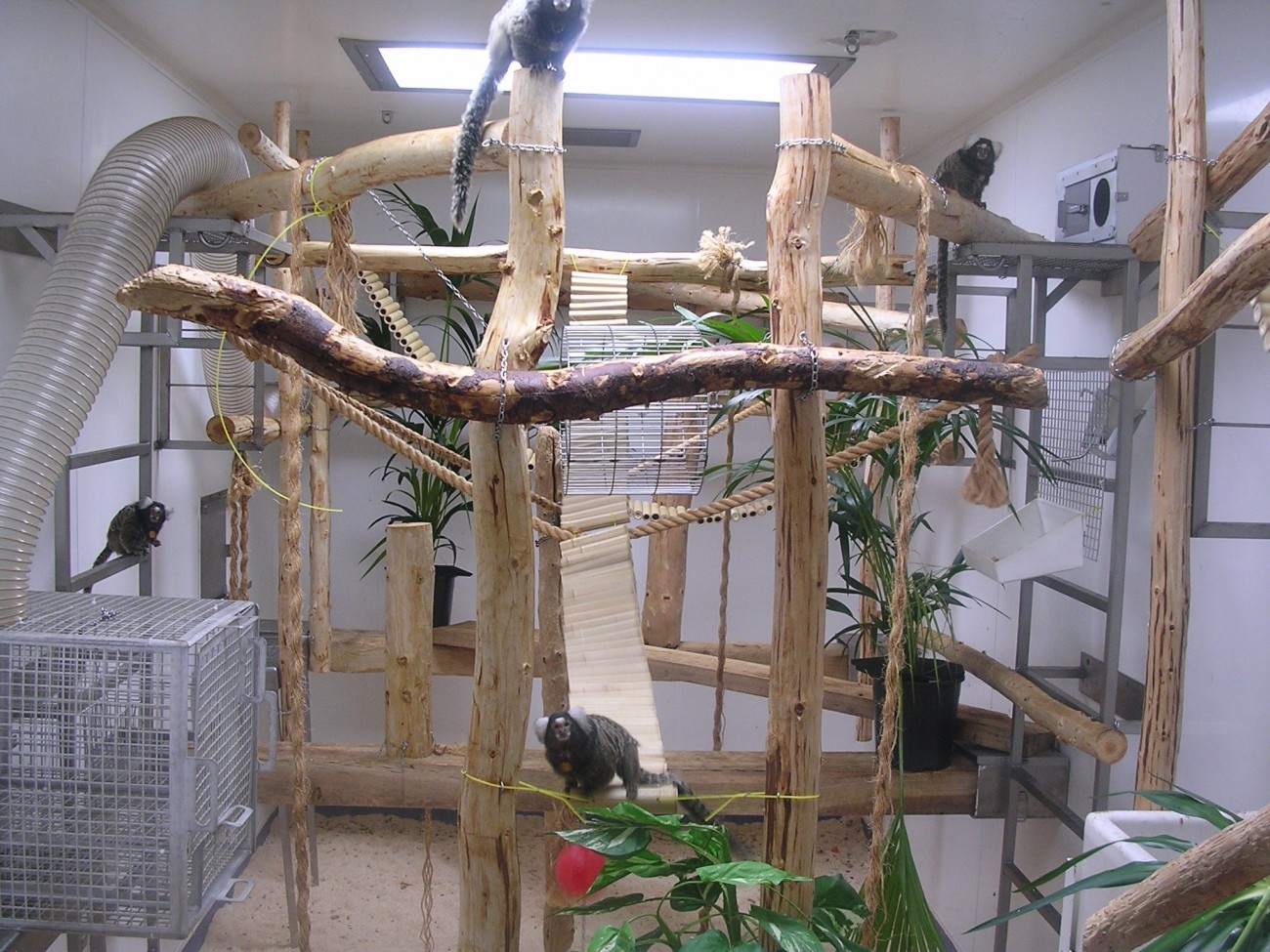Housing and husbandry: Non-human primate
Information to help refine the housing and husbandry of laboratory non-human primates.
On this page
Introduction
There is a great deal of published information on the housing and husbandry of non-human primates. The underlying principle is to provide safe, comfortable and hygienic accommodation and care, which allows the animals to perform a wide range of species-typical behaviour and exercise a degree of choice and control in their environment (e.g. to choose to socialise with, or avoid, group mates). The amount and quality of space provided, and the flexibility of the enclosure, are essential considerations. Other factors that should be taken into account include ease of cleaning, capture and monitoring of the animals.

Components of a good primate housing system
The components of a good primate housing system are listed below. Most are applicable to all species, although the detail of how to interpret and apply each component may vary. Advice from a specialist in primate behaviour and welfare will help to interpret the requirements for individual species. It is also necessary to take into account the procedures that animals undergo and any requirements imposed by them (e.g. surgically-prepared animals may need an area in the home enclosure where they can recover from anaesthesia yet retain visual and olfactory contact with the rest of the social group).

- Housing in stable, compatible groups (pairs at least).
- Adequate socialisation and habituation to humans, and training for cooperation with husbandry and procedures, where appropriate.
- Sufficient space to provide for exercise, a range of species-typical behaviours, structural division of the enclosure, and suitable environmental enrichment.
- A solid floor as a resting area and to allow provision of substrate for foraging.
- Sufficient enclosure height to allow vertical flight if alarmed; no small double-tier cages since these limit upward movement and therefore can be stressful for the animals. Evidence suggests the lower levels can be dark and the animals may receive less attention from staff.
- Structures to enable utilisation of as much of the enclosure as possible (i.e. to increase the useable space for the animals), for example, perches, platforms, swings, ropes, ladders; sufficient for all animals to occupy without competition
- Visual barriers to allows animals to control their social interactions
- Nest areas for species that use them (e.g. wooden nest boxes and plastic hanging buckets for marmosets and tamarins)
- A varied diet appropriate for the species
- The ability to forage, including appropriate artificial feeding devices and scatter feeding
- Appropriate wood (i.e. no chemical preservatives or long strips that can block the gut) for species that gnaw (e.g. marmosets) and for scent-marking
- Toys, chews, tactile materials and destructible materials (e.g. cardboard boxes) to provide a degree of control over the environment.
- Adequate light levels and appropriate spectral emission for species' needs.
- A flexible enclosure/furniture layout to allow stress-free capture.
- Provision to facilitate positive reinforcement training in groups (e.g. seprate areas in front of the cage where dominant and subordinate animals can be trained simultaneously).
- A degree of novelty (e.g. minor changes in furniture, feeding practices, toys).
- Access to outdoors wherever possible.

Enrichment strategies
Further examples of enrichment strategies are given on the NC3Rs Macaque Website and Common Marmoset Care website.
Related resources
- The Macaque Website An information-rich, highly visual and referenced resource on macaque behaviour, care and welfare, developed by the NC3Rs.
- Marmoset Care A comprehensive, online resource on marmoset behaviour and care, partly funded by the NC3Rs.
- Environmental Enrichment and Refinement of Husbandry for Nonhuman Primates Animal Welfare Institute Database.
- Non-human primate accommodation, care and use (2017) Guidelines adopted as a condition of funding by the major UK funders of bioscience research using non-human primates.
- BPRC's Enrichment Manual for Macaques and Marmosets Vernes MK, Louwerse AL, Eds. (2010).
- Enrichment for Nonhuman Primates NIH Office of Laboratory Animal Welfare (2005).
- Comfortable Quarters for Nonhuman Primates in Research Institutions Reinhardt V (2002).
- The Welfare of Non-Human Primates Used in Research Scientific Committee on Animal Health and Welfare (2002).
References
- Buchanan-Smith HM, Prescott MJ, Cross NJ (2004) What factors should determine cage size for primates in the laboratory? Animal Welfare 13: S197-201
- Buchanan-Smith HM, Shand C, Morris K (2005) Cage use and feeding height preferences of captive common marmosets (Callithrix jacchus) in two-tier cages. Journal of Applied Animal Welfare Science 5: 131-149
- Hubrecht RC, Kirkwood J, Eds. (2010) The UFAW Handbook on the Care and Management of Laboratory and Other Research Animals, 8th Edition, Wiley-Blackwell.
- Jennings M, Prescott MJ, Eds. (2009) Refinements in husbandry, care and common procedures for non-human primates Lab Anim. 43(1) 1-47
- Prescott MJ, Buchanan-Smith H (2004) Cage sizes for tamarins in the laboratory. Animal Welfare 13:151-158
- Rennie AE, Buchanan-Smith HM (2006) Refinement of the use of non-human primates in scientific research, part II: housing, husbandry and acquisition. Animal Welfare 15: 215-238
- Roder EL, Timmermans PJA (2002) Housing and care of monkeys and apes in laboratories: adaptations allowing essential species-specific behaviour. Laboratory Animals 36: 221-242
- Waitt CD, Honess PE, Bushmitz M (2008) Creating housing to meet the behavioral needs of long-tailed macaques. Laboratory Primate Newsletter 47(4): 1-5
- Wolfensohn S, Honess P (2005) Handbook of Primate Husbandry and Welfare, Wiley-Blackwell.
